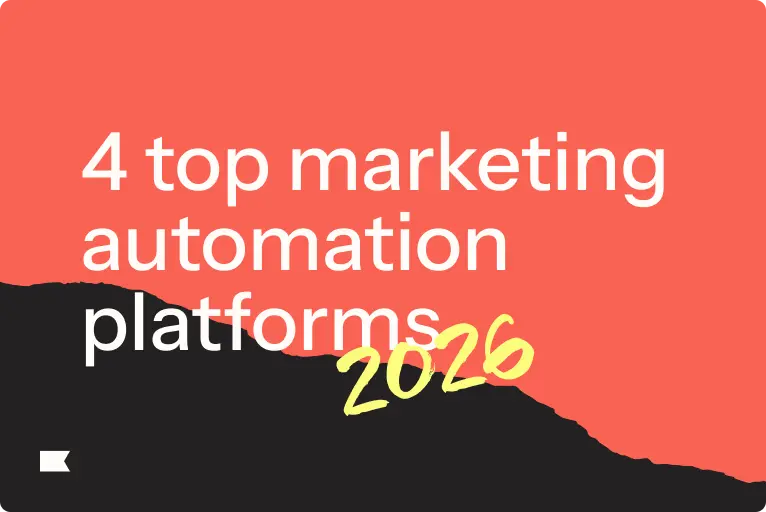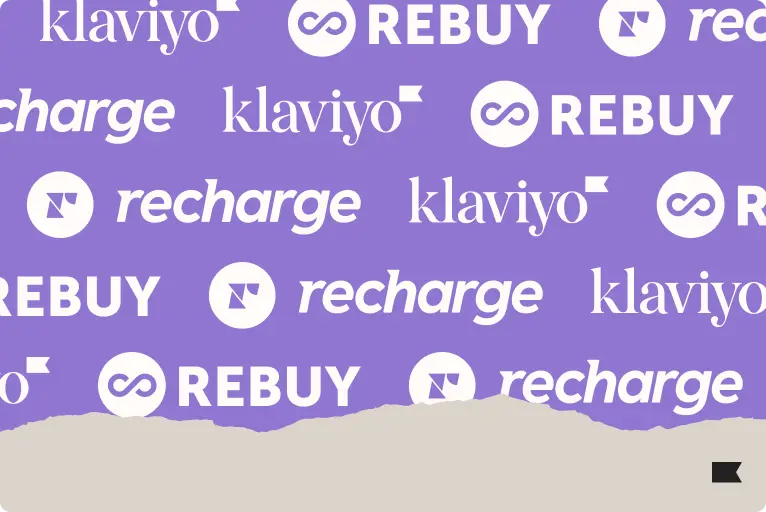How Big Heart Tea pivoted from wholesale to DTC—almost overnight

For Big Heart Tea founder Lisa Govro, the pandemic was the rare kind of roller coaster ride that starts with a fall.
At the beginning of 2020, the St. Louis-based entrepreneur mainly sold her organic tea wholesale, through a mix of national retailers like Anthropologie and local restaurants and cafes, like St. Louis’ Cafe Osage.
Then COVID-19 hit.
When the economy contracted, restaurants felt it quickly. And intensely. On March 18, 2020, global restaurant traffic was down 89% from from the same day in 2019, according to estimates from restaurant consultant Aaron Allen.
“We lost like 85% of our business overnight when COVID hit,” Govro says.
Big Heart wasn’t immune. “We lost like 85% of our business overnight when COVID hit,” Govro says.
Then, the corporate gifting started. Employers started including Big Heart Teas in snack boxes they sent out to employees, which sparked an influx of orders on Big Heart’s Shopify store.
“It just blows my mind,” Govro says. “I never thought people would go to bighearttea.com and buy a $10 box of tea.”
People would. People did. Sales “bounced back a lot faster than I thought,” Govro recalls.
Ever since, Govro and her business partner, “VP of Green” Kunthearath Nhek-Morrissey, have focused on growing their DTC consumer base.
“For me it’s the most sound strategy,” Govro says. “We have traction in our wholesale program, but I would rather stabilize revenue with thousands and thousands of individual, one-off accounts than a couple big-fish wholesale accounts.”
Pivoting to DTC isn’t easy, though—even if, like Big Heart, you already have your Shopify store up and running. Govro and Big Heart’s marketing director, Julie Berkbuegler-Bushnell, had their work cut out for them.
The challenges of marketing tea to Americans
If Big Heart Tea was relatively easy to market wholesale, it’s because insiders knew right away that it was special.
Anthropologie started carrying the tea the same day Big Heart launched in 2017—and still does today. Coffee shops and restaurants knew Big Heart tea set them apart from their competitors, too. “We carry Big Heart because it’s the best tea we’ve ever had,” said one barista at St. Louis coffeehouse The Mudhouse.
That unique flavor comes from Big Heart’s artisanal production process. Govro’s team sources their organic tea ingredients—like turmeric and chamomile—directly from sustainable farms in India, Japan, and the U.S.
In 2018, Big Heart was one of the early-stage startups that won an Arch Grant, and Govro invested the prize in supply chain transparency. Big Heart currently lists all five farms they work with right on their website.

The Big Heart team also grinds their suppliers’ herbs and spices in small batches right before packaging. That makes their tea more flavorful and distinctive than the typical mass-produced tea, which is often laced with “undisclosed flavors and sweeteners and colors to the leaf to maintain consistency and flavor year over year,” Govro explains.
One 2011 study found that 7% of mass-produced tea and about 33% of herbal teas contained undisclosed ingredients.
That results in tea that “tastes like a spice cabinet” all muddled together, as Govro put it to the STL. “A natural product shouldn’t taste the same every time you have it,” she adds.
Buyers for retailers big and small get that. But few individual Americans know about the often “shady” tea supply chain, because few Americans drink tea.
Tea is widely cited as the second most popular beverage in the world (after water), but in the U.S., coffee is the most popular beverage by far. In 2016, Americans drank more coffee per capita than tea and soda combined, Marketwatch reported.
Since 2016, tea consumption per capita hasn’t grown. It has stayed completely flat at 0.9 pounds, according to an IBIS World report, though in 2020, the Tea Association of the U.S.A. reported that the high-end specialty tea sector was growing at 4-5% each year.

That’s a good sign for Big Heart. Still, successfully marketing tea to online shoppers means educating them about the basics. When they started transitioning to DTC, Govro and her team realized they needed to teach consumers what sets Big Heart apart from the competition in terms of sourcing, sustainability, and flavor.
They also needed—more basic still—to teach people how to make tea and tea-infused treats.
Big Heart had a robust “About” section on their website, as well as a recipe blog. But they needed to send more curious people to those pages to grow their DTC business. Or, to put it another way: They needed to ramp up their marketing.
How Big Heart grew its DTC revenue
Day to day, Govro focuses on Big Heart’s marketing—though she has mixed feelings about that term. “I hate that word because everything that you do in business is marketing,” she says.
For example: Govro’s business partner, Nhek-Morrissey, devotes herself to Big Heart’s operations and supply chain. Those are arguably behind-the-scenes endeavors, except they’re intimately tied to Big Heart’s brand values of transparency and partnership.
There’s no hard line between marketing and the rest of a business. Still, it’s Govro who works with Berkbuegler-Bushnell on messaging, strategy, and spend across email, paid digital, and organic social—all on a bootstrapped budget.

“Aside from the grant we were awarded, we’re pretty much 100% self-funded,” Govro says. “So we have more of a slow growth model.”
That means that Big Heart Tea can’t impulse-buy expensive marketing software, or sink millions into an awareness campaign. They need to optimize every inch of their marketing, and they need to see ROI.
In the wake of the pandemic, Govro and Berkbuegler-Bushnell pivoted toward a more DTC-friendly strategy using this playbook.
Investing in email segmentation and marketing automation
Email is Big Heart’s “biggest channel for retaining DTC,” Govro says. “We’ve been investing pretty heavily in email growth.”
But until Big Heart switched from Mailchimp to Klaviyo a few months ago, email also posed challenges. In the Mailchimp interface, Govro had a hard time tracking engagement over time. Her team was using spreadsheets to do it manually, but that was time-consuming.
Email is Big Heart’s “biggest channel for retaining DTC,” Govro says.
“They don’t even have an analytics dashboard,” she says of Mailchimp. “You have to look at data by email. It’s a very tedious process.”
Klaviyo unlocked clearer longitudinal insights. “It’s cool to see the benchmarking data that Klaviyo has to see how we compare to other folks,” Govro says.
Immediately, Govro noticed strong open rates—and, when Big Heart sent blasts to their entire contact list, high unsubscribe rates.
They promptly pared down their mass sends to once or twice a month. Now, Big Heart only emails their whole list when they’re having a sale or launching a new product, Govro says. Only the most engaged subscribers receive new recipes and blog posts.
The high unsubscribe rates on mass sends also sparked Govro’s interest in segmentation and evergreen, behaviorally triggered emails. She thought they might reduce unsubscribes—not to mention her team’s workload.
“We are creating unique content for two emails a week and we have a small team,” Govro says. “Our goal would be to do two unique emails a month,” and automate the rest.
“Klaviyo is a huge part of our DTC strategy.”
For example, someone who signs up for Big Heart Tea’s emails might receive an automated welcome sequence of three emails:
- An email about Big Heart’s origin stories and values
- An email about the health benefits of organic herbal teas
- An email with a discount code to use toward their first purchase
Klaviyo makes it easy to set up basic flows like that, and also more complex ones. Its segmentation options can get much more granular—or “down and dirty,” as Govro puts it—than Mailchimp’s. With Klaviyo’s predictive analytics, for example, mean Govro can segment by forecast customer lifetime value.
She and her team are still learning the ins and outs of Klaviyo, but they’re excited to build out a more scalable email program. “Klaviyo is a huge part of our DTC strategy,” Govro says.
Shifting Facebook spend to paid lead generation
When it comes to top-of-funnel customer acquisition, Big Heart relies on paid digital channels, specifically Google and Facebook ads.
This is where Govro and her team have focused their A/B testing so far. “We do A/B testing with ads, really trying to figure out what type of content is working, from visual assets to copy,” Govro explains.
They find “little tiny” optimizations from those tests, but the findings often feel “random,” Govro says, and don’t always make a major or lasting impact.
Adding to the confusion: Facebook and Google ads are expensive, especially now that Facebook has lost efficacy (and about 33% of its stock price) to Apple’s 2021 iOS update.
“It’s easy to get overwhelmed by all the opportunities, all the things that we could do.”
“Sometimes I feel like we’re just treading water,” Govro says. “The frustrating thing is that we are a small team trying to play in a really big space. It’s easy to get overwhelmed by all the opportunities, all the things that we could do.”
With endless possible A/B tests and a finite paid advertising budget, Govro’s team ultimately decided that on the privacy-first web, the savvy move was “changing how we pay to get our name out there” on Facebook, she explains.
Instead of running Facebook campaigns that push to Big Heart’s Shopify store or landing pages optimized for conversions, Govro and her director of marketing run lead-collection campaigns on Facebook.
Their current ads ask users to share their email address to be entered to win a year of free tea. Govro’s team selects a winner once a month, and all the email addresses port to their Klaviyo contact list.
“We had some pretty aggressive goals for growing our email list this year, and we’re on track to achieving those.”
So far, they’re paying about 40 cents per new email address, and the campaign is scaling nicely. “We had some pretty aggressive goals for growing our email list this year, and we’re on track to achieving those,” Govro says.
The leads that come in through the campaign engage with emails down the line, too, which tells Govro they’ve set their targeting correctly.
Boosting organic Instagram with Linkin.bio and co-marketing
Big Heart has amassed its biggest organic social audience on the same channels where Govro focuses paid social spend: Instagram, where Big Heart has 17K+ followers, and Facebook, where it has about 6K.
On Instagram, its pillar channel, Big Heart posts an eclectic mix of shots to its grid, including:
- Photos of tea drinks, like this shot of a sunlit iced matcha tea
- Flatlays of packaged Big Heart Tea
- Photos of the Big Heart team, like this candid of Govro and Nhek-Morrissey
- Portraits of customers with tea
To drive DTC consumption, most of these shots link out to Big Heart Tea’s online store on Big Heart’s Linkin.bio landing page, created with Later.
There are other ways to monetize Instagram, too. For example: Govro reports a major sales lift recently from the organic stories she posted on Big Heart’s birthday, March 15.

That day, Govro worked with her friend Kaylen Wissinger, the founder of St. Louis bakery Whisk, to make “beautiful mini-cakes” for Big Heart’s top wholesale vendors in the city. It was a spontaneous project, but random acts of kindness felt aligned with Big Heart’s values, and the generosity snowballed into an effective co-marketing campaign.
“We storied it all day and did lots of posting, and then all those customers reshared what we storied—videos of them eating the cake,” Govro explains.
Govro reports a 200% increase in sales that day—and a major spike in engagement.
Next move: the Happy Tulsi tea launch
Big Heart’s updated approach to its 3 main marketing channels has transformed its core business. Since the beginning of 2020, DTC’s share of Big Heart’s total revenue has grown from 5% to about 30%, according to Govro.
But she’s not satisfied yet. She’d love to strike a 50/50 balance between DTC and wholesale revenues. “That would help me sleep a little bit better at night,” she says.
Big Heart’s next tea launch just might nudge the business further in that direction. The new tea, Happy Tulsi, is made with the rama variety of tulsi, which feels particularly relevant to Govro in our stressful current times.
It’s good for “helping the body adapt to stress, reducing fatigue, and basically everything we need right now,” she says—an argument Marc Maurice Cohen supported in a 2014 issue of The Journal of Ayurveda and Integrative Medicine.

The new tea is also an exciting first for Big Heart from a production standpoint: It’s their first tea sourced from an American farm. “We were having a ton of supply chain issues in early 2020 getting tulsi, just not being able to find container space or freight space to get it over here from India,” Govro explains.
Increasingly desperate googling eventually turned up a stateside farm that could handle growing, drying, and milling tulsi: Oregon-based Oshala Farms.
The tea’s benefits and backstory make for perfect email storytelling, and news of this new tea will go out to Big Heart’s full email list. Govro also plans to spread the word through hyper-segmented, automated flows in Klaviyo.
Govro plans to spread the word through hyper-segmented, automated flows in Klaviyo.
This launch, which will be Big Heart’s first with Klaviyo, could lift the average lifetime value of the company’s individual customers to new heights.
Of course, that’s only possible thanks to Govro and her team’s intuitive understanding of their customers, grown from thousands of farmer market interactions and personal email exchanges. The team sensed that customers would respond to a tulsi tea now, and that the tulsi from Oshala Farms has enough star power to carry a single-ingredient tea launch.
As Govro puts it, “We know our audience and our customers better than any marketing company could.”

Related content

Discover the best marketing automation platform for 2026 and learn how to choose based on data, integrations, scalability, and the features that drive real customer value.

Discover 4 proven ways to reduce cart abandonment and recover lost sales. Learn how to build trust, streamline check-out, and personalize abandoned cart flows to convert more shoppers.

Looking for the best Shopify apps for marketing and customer service? Klaviyo, Rebuy, and Recharge together create a high-performing tech stack that revenue and customer retention.